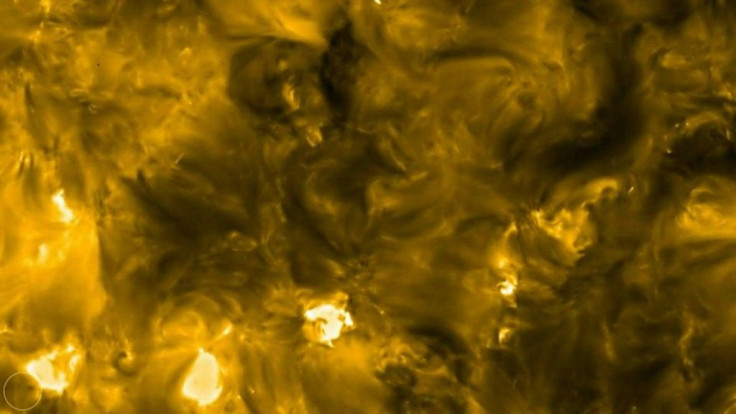Quiet Before The Storm: Solar Orbiter Captures 'Unprecedented' Footage Of Sun's Corona
KEY POINTS
- The Solar Orbiter was just 29% of the Earth's distance from the Sun
- The close encounter took place on Oct. 12 at 19:12 UTC (21:12 CEST)
- It is the highest resolution movie of the corona ever taken by an instrument
The European Space Agency (ESA) Solar Orbiter had its second close encounter with the Sun this month and managed to capture video of the Sun's corona at a higher resolution than ever.
The video displays orangish-yellow swirls across the surface of the Sun, evoking haunting imagery of a world on fire. The eerie calmness in the video is spine-chilling.
The Sun's outer atmosphere is called the corona. It is said to be quiet when solar activity, such as flares or coronal mass ejections, is very little.
The Solar Orbiter was just 29% of the Earth's distance from the Sun when it had this close encounter on Oct. 12 at 19:12 UTC (21:12 CEST). On Oct. 13, the video of the quiet corona was returned by the spacecraft's Extreme Ultraviolet Imager (EUI). It is the highest resolution movie of the corona ever taken by an instrument.
The video might look like it covers only a little chunk of the Sun's surface. But each pixel of this movie captures 105 km on the surface of the Sun. For context, if the EUI were to shoot Earth's video from the same distance, our little blue planet would be completely covered in just 120 pixels.
The "unprecedented" video, according to the ESA, comprises 2,048 pixels across. Unbelievingly, 17 Earths would fit side by side across this image.
The Sun is preparing for its solar maximum, a period in which solar activity is at its peak, in the year 2025. So, the view of a quiet corona such as this will become rare as 2025 approaches.
"This movie, and others taken during the encounter, show the dynamic nature of the Sun's million-degree-hot corona. The electrically charged gas here, known as plasma, is in constant motion, guided and accelerated by changes of the Sun's magnetic field," the ESA said in a news release.
"The arches of bright plasma in the movie are being held in place by loops of magnetism that burst up into the corona from the Sun's interior," the agency said.
The Sun shoots out streams of particles that originate in the corona. The mechanism behind this phenomenon is not clear, and is one of the objectives of the Solar Orbiter to find out.
"I am very much looking forward to data from all ten instruments being downloaded during the next few weeks, and then the worldwide science community will be very busy discovering new things using this unique data set," Daniel Müller, ESA project scientist for Solar Orbiter, said in the news release.
The ESA noted that the footage was enhanced with the Wavelet Optimized Whitening technique.
Recently, the Solar Orbiter had been hit by a strong coronal mass ejection which was done deliberately by the spacecraft.
"As if trying to get the orbiter's attention as it cozied up to another body in the Solar System, the Sun flung an enormous 'coronal mass ejection' straight at the spacecraft and planet just two days before their closest approach," the agency said.

© Copyright IBTimes 2024. All rights reserved.











